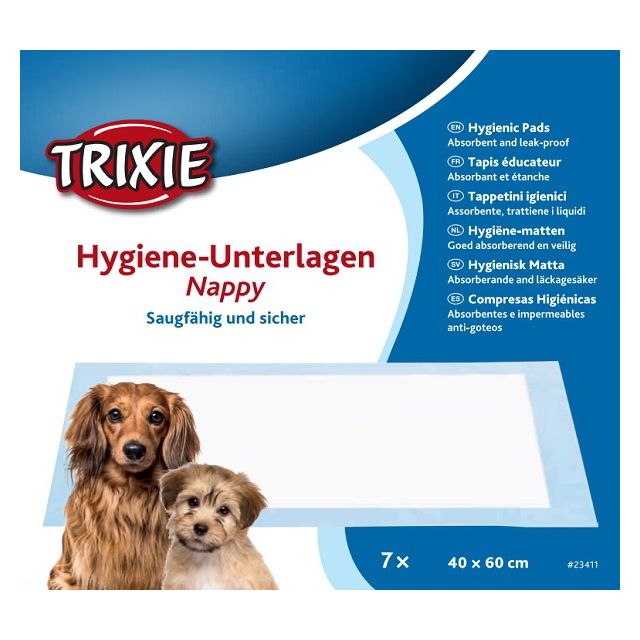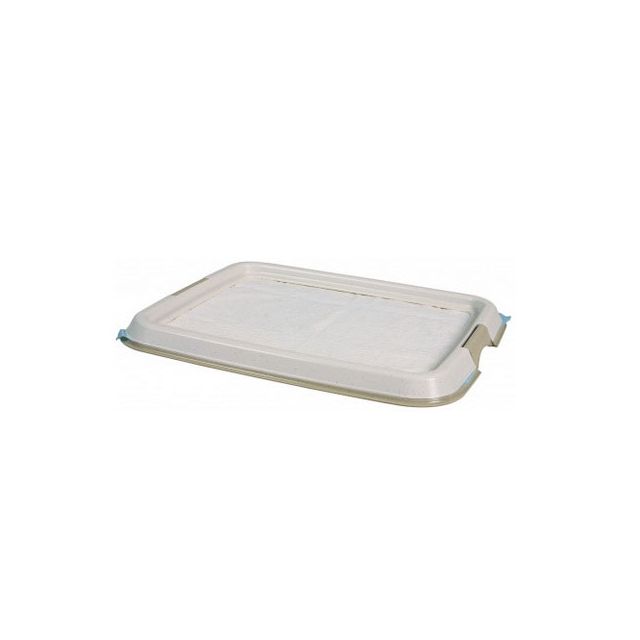House training a puppy
One of the most important first steps when adopting a puppy is house training. House training a dog requires dedication and patience. Successful house training is based on repetition and reward, not punishment. So, how do you house train your puppy? Pharmacy4pets tells you the best approach!
House Training for Puppies
An important aspect of house training a puppy is following a consistent daily schedule for eating, sleeping, and going outside, so your puppy knows what to expect. Use the same word for bathroom breaks, such as “potty” or “out,” and say this every time you take your puppy outside. This helps your puppy associate the word with the action. Follow these tips, and before you know it, your puppy will be house trained:
1. Take your puppy outside frequently
Young puppies, especially those under twelve weeks old, need to go outside every one to two hours. This frequency is necessary because young puppies are still developing bladder control and are more likely to have accidents in the house. Preventing accidents helps your puppy become house trained more quickly. Puppies can hold their bladder for about one hour longer than they are months old. For example, an eight-week-old puppy can hold it for three hours, while a twelve-week-old puppy can hold it for four hours. At night, you can extend the interval a bit, but a young puppy cannot hold it all night, so you will need to set your alarm at night during the first few weeks. Since puppies often need to pee or poop when they wake up and after eating, it’s a good habit to take your puppy outside after sleeping, playing, eating, or drinking.
2. Stick to a consistent schedule
It’s recommended to feed and walk your puppy at regular times. By following a consistent feeding and walking schedule, you can avoid confusion and accidents in the house.
3. Use crate training as an aid in house training your puppy
Crate training is an effective tool in house training your puppy. It not only helps with house training but also provides your puppy with a safe place in the house. Dogs do not like to soil where they sleep or eat, so by teaching your puppy to feel comfortable in a crate, you can prevent indoor accidents. The crate should never be used as a punishment, but rather for sleeping and when you cannot supervise your puppy directly.
Choosing the right size of crate is important, especially for large breeds that grow quickly. Your puppy should only have enough space to stand up, turn around, and lie down comfortably. Too much space may lead the puppy to rest in one corner and pee or poop in the other. Many crates come with a divider that can be adjusted as your puppy grows.
4. Reward
Positive reinforcement is key to successful house training. Every time your puppy pees outside, you should immediately reward them with kind words, a tasty treat, or a favorite toy. It’s important that the reward follows the event immediately so that your puppy forms a positive association with doing their business outside. However, avoid rewarding your puppy during peeing or pooping, as this might distract them, causing them to stop prematurely.
5. Recognize when your puppy needs to go outside
Keeping a close eye on your puppy is a crucial part of successful house training. By learning to recognize the signals that indicate your puppy needs to pee, such as sniffing, circling, walking away, whining, or sitting by the door, you can prevent unnecessary accidents in the house.
6. Use of puppy pads
Puppy pads are often recommended for house training. However, if used incorrectly, they can actually delay your dog’s house training. Puppy pads can be very useful in special situations, such as when you live in a high-rise apartment or if you have limited mobility. Allowing puppies to pee on the pads in the house can cause confusion about where they are allowed to pee. This can delay the puppy’s house training. The same goes for letting your puppy pee in the yard. If you don’t want this when your dog is older, it’s better to teach them to do their business outside the yard from the start. Of course, if you use puppy pads, you should place them in a consistent spot in the house and avoid placing pads in the crate.
7. Never punish your puppy for an accident
Punishment is not an effective method for house training. Your puppy won’t understand what they did wrong but will become afraid of you, which is, of course, not good for your relationship. It’s important to remain patient and kind during the house training process.
When is a puppy house trained?
Every puppy is different, and some pick it up faster than others. However, if you are consistent and follow all the steps mentioned above, most dogs will be almost fully house trained within one to two weeks. Some breeds generally become house trained faster than others. For instance, a Golden Retriever might be doing their business outside within two weeks, while a Beagle may need more time. That’s okay; it’s just natural variation. If your puppy takes longer than expected, check if you are consistently following all the steps. Often, longer house training means something in the routine is confusing for the puppy. House training a puppy requires patience and perseverance, but with the right approach and consistency, your dog will quickly learn where to do their business. If you have a question about our products or about house training your dog, please contact us.



